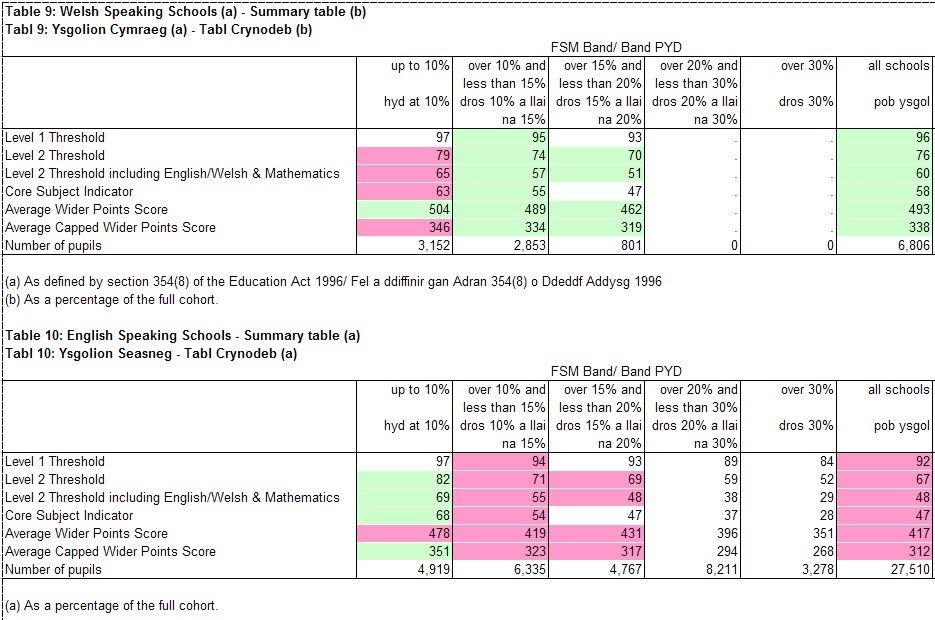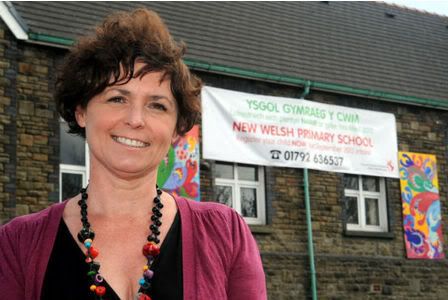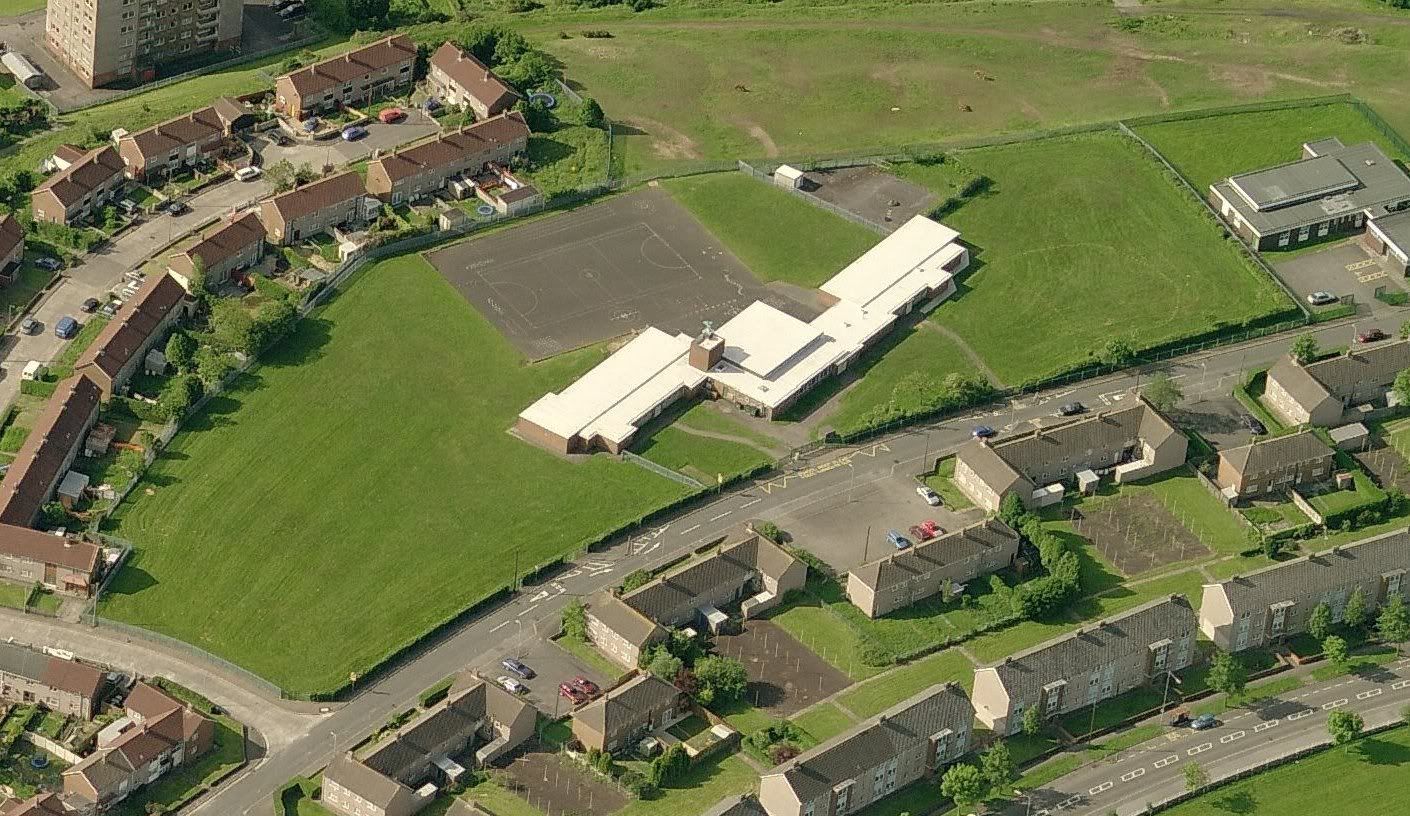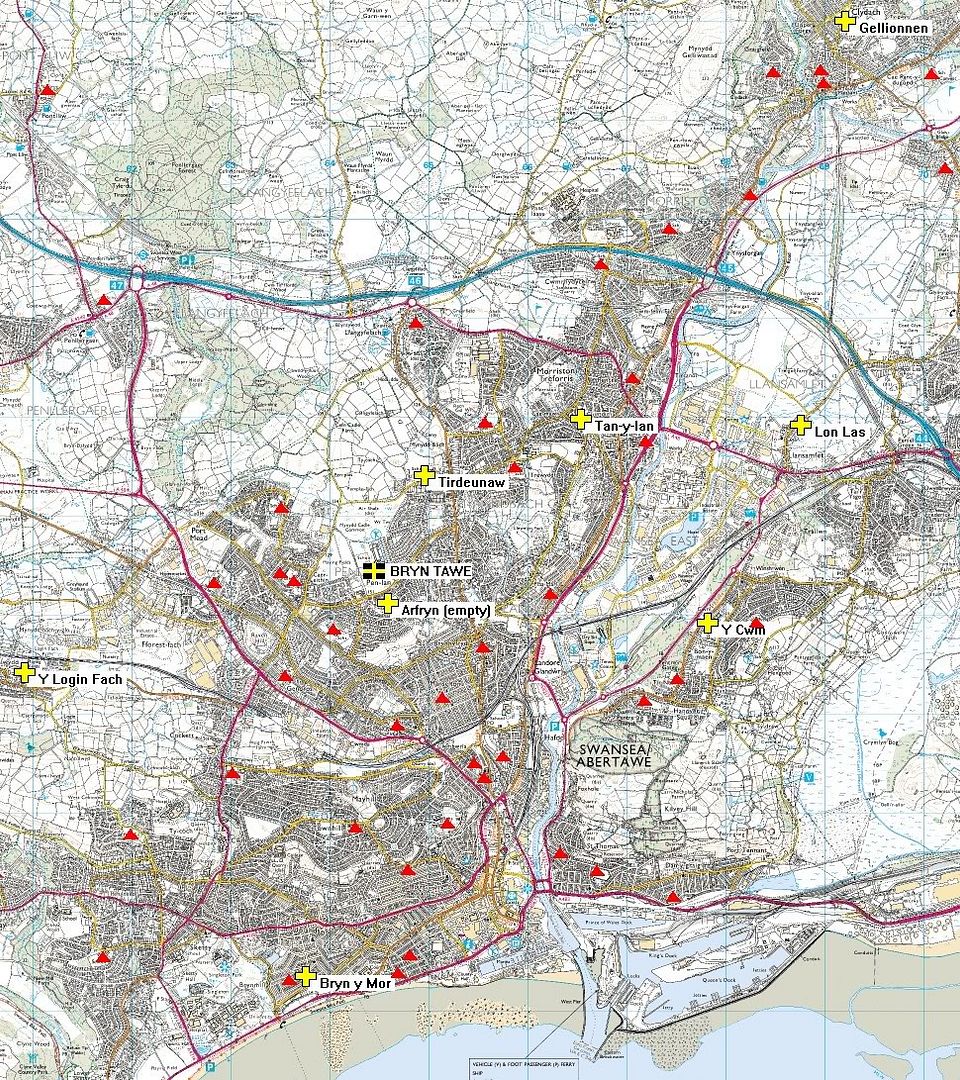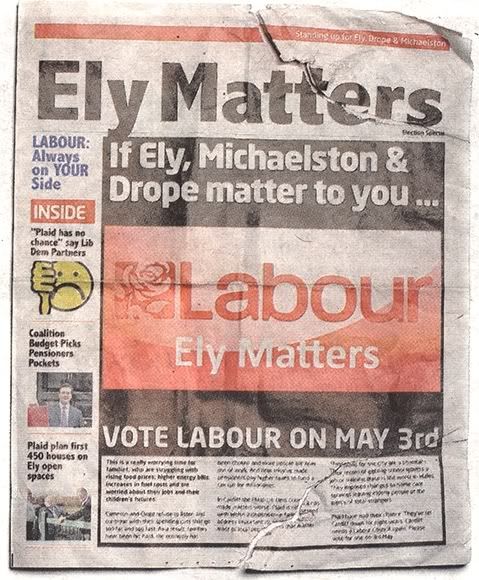It's been some time since I've written about Welsh-medium education, and I thought it might be good to make up for that by trying to put what has been headline news this past week into a wider perspective. That news was the story in the Western Mail about the local Chamber of Commerce's objection to Ysgol Gynradd Aberteifi changing from a dual stream school to a Welsh-medium school.
Welsh-only education will damage economy, say business leaders
For some time (see this post about Trimsaran in 2009) I have been convinced that gradually changing the language status of existing schools is a very good way of meeting the growing demand for Welsh-medium education. It is almost always better than taking the decision to close an English-medium school that is not viable due to low pupil numbers and then reopening the same building as a new Welsh-medium school, because it minimizes the disruption both to individual children and to the community. What happens is that a school will start to teach all new pupils in Welsh, but that children already in the English stream will continue in that stream until they move on to secondary education. The school will gradually become a Welsh-medium school over a period of six or seven years.
-
What is now being proposed at Aberteifi is no different from what started to happen at Trimsaran in 2009, or what will start to happen at Ysgol Pencae in Penmaenmawr this coming September – a decision that was made by Leighton Andrews only three weeks ago, details of which are available from this page.
As we can read in the Statement of Information, parents at Ysgol Pencae make a decision about which language stream they want their children to enter at Year 1. Far fewer parents choose the English stream. Only 5 out of 30 went into the English stream in September 2011, and the parents of only 3 out of 26 children in the current reception year have indicated that they will choose that option for their children this coming September. At Ysgol Gynradd Aberteifi, as we can read here, only 2 children out of more than 30 are in the English stream. This is unsustainable, in particular because such low numbers are bad for children in educational terms as there simply aren't enough other children in class to interact with even when different year groups are taught together. Any school, anywhere in Wales, with such a low yearly intake would almost certainly be earmarked for closure.
If there is any difference between the two situations it is that there are schools very close to Ysgol Pencae, and any parents who want an English-medium education for their children can send them there instead without much inconvenience. But there is no other English-medium provision in the whole of south Ceredigion, the closest alternative being 31km away in Cei Newydd (English with significant use of Welsh) ... although Ysgol Y Ddwylan, a dual stream school just over the Sir Gâr border in Castell Newydd Emlyn, is some 16km away. Neither of these is particularly close, although it is worth noting that in other parts of Wales children have to make even longer journeys to get to their closest Welsh-medium school.
-
The big question is at what point is it justifiable to do away with all English-medium provision in a particular area, or indeed whether it can ever be justified. All parents in Wales are able choose a Welsh-medium education for their children, although it sometimes involves having to travel a long distance to get it, paid for by the local authority; so should all parents have the same right to choose an English-medium education for their children?
To answer this question the first thing to realize is that Welsh-medium primary education generally produces better results than English-medium education.
Key Stage 2 Summary Tables, 2011
English ... WM schools 86% ... All schools 84%
Mathematics ... WM schools 87% ... All schools 86%
Science ... WM schools 90% ... All schools 88%
Core Subject Indicator ... WM schools 83% ... All schools 81%
Source
When broken down by free school meal entitlement to reflect deprivation, EM schools tend to do better in less deprived schools with up to 12% FSM entitlement, EM and WM are exactly equal in the 12-18% FSM band, and WM does better in the 18-24% and 24-30% FSM bands. But all these differences are marginal.
The big difference is in Welsh. In WM schools children are taught Welsh to first language standard, but in other schools they are generally taught only to second language standard. However in both WM and EM schools, English is always taught to first language standard. Therefore the main advantage of WM education is that children become competent in both English and Welsh, rather than just in English. It is not absolutely impossible for children to become competent in Welsh if they go to an EM school, but it is unlikely. For all practical purposes, WM education is the best way of ensuring that your child is fully bilingual in Welsh and English.
-
The second factor to consider is how important it is for a child to be able to speak and write Welsh competently. This is a value judgement, of course, but I would suggest that it is very much more important to ensure that a child is competent in Welsh and English in those parts of Wales where there is a higher percentage of Welsh speakers than it is in those areas of Wales where the percentage is lower, and that this difference justifies a difference of approach. Parental choice is a good thing, but it must always take second place to what is in the best interests of our children, and it is up to us as a society to determine what these are through democratically elected government. Parents do not and should not have the right to decide whether their children are taught subjects like mathematics or science, or to what standard they are taught English, because these are key subjects which are important throughout Wales. Why should it be different for Welsh in those parts of Wales where the language is important? That is why the Welsh Government will insist that local authorities measure and fulfill the parental demand for Welsh-medium education, but does not do the same for English-medium education in those parts of Wales where Welsh is more widely spoken.
I think it is self-evident that a child who grows up in Gwynedd, Ynys Môn, Ceredigion or Sir Gâr (and perhaps west Conwy and north Pembrokeshire too) will be at a severe disadvantage when it comes to both finding employment and being able to play a full part in the life of the local community unless s/he is able to speak both Welsh and English competently. That's not to say that any child who can't speak Welsh elsewhere in Wales won't be at disadvantage too—for being able to speak both languages will always be better than being able to speak just one of them—but that the disadvantage of not being able to speak Welsh will be less in those other areas. Because of this, I don't think it unreasonable to allow parents a choice about the medium of instruction in the more Anglicized parts of Wales, but for that choice to be steadily withdrawn in the more Welsh speaking parts of Wales.
South Ceredigion is one of these areas. I think it's fair to assume that any parent in the area who wanted an English-medium education for their children would be sending them to the English stream of Ysgol Gynradd Aberteifi, and therefore that the parents of only two children starting school this year in the whole of south Ceredigion, not just Aberteifi itself, have chosen to not have them educated in Welsh. It is unreasonable and impractical to expect Ceredigion to continue to maintain English-medium education for so small a number, even if it leaves parents with no choice about the medium of their children's education.

Update - 12:00 16 April 2012
I thought I'd add a short note to clarify what the different categories of school are, in particular to dispel the idea that Welsh-medium schools teach exclusively in Welsh at the expense of English.
Up until a few years ago the definition of a Welsh-speaking school was that more than half of foundation subjects were taught wholly or partly in Welsh. That was a rather loose definition, and could include (at least mathematically) schools which were teaching just over half these subjects only partly in Welsh ... i.e. doing the majority of their teaching in English.
In 2007 a more precise set of definitions was introduced. For primary schools these are:
WM ... Welsh-medium ... at least 70% of teaching in Welsh
TR ... Transitional ... 50-70% of teaching in Welsh
EW ... English with significant use of Welsh ... 20-50% of teaching in Welsh
EM ... English-medium ... less than 20% of teaching in Welsh
Additionally, a Dual Stream school has two of the above categories, usually a WM and an EM stream.
Defining schools according to Welsh-medium provision
Obviously the proportion of time spent using each language in teaching and non-teaching activities will vary from school to school. But an interesting snapshot of how much time was spent using each language in schools in Gwynedd was provided in this survey:
Between pupils and teachers
Welsh used 70% in class
Welsh used 56% in break time and playground
Between children in class
Welsh used 37%
Welsh and English used 33%
Between children in playground
Welsh ... 27%
Mostly Welsh ... 11%
Welsh and English ... 25%
Mostly English ... 15%
Almost always English ... 19%
I trust this shows that even in the strongest Welsh-speaking areas, English is very far from completely squeezed out in Welsh-medium schools.
If anything, it is probably true that Welsh is used more in Welsh-medium schools outside the Fro Gymraeg than inside it. In the more Anglicized parts of Wales the school environment will often be the only place in which a child hears and uses Welsh, and parents and teachers therefore tend to want children to be completely immersed in Welsh while at school, knowing that it will be more than balanced by the predominantly English-speaking environment outside school. But in places where Welsh is more widely spoken there tends to be a more relaxed attitude to how much English is used in school.



